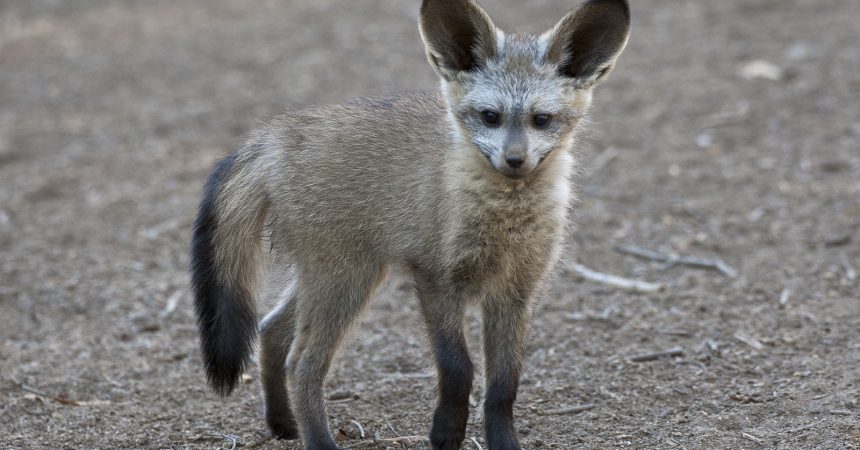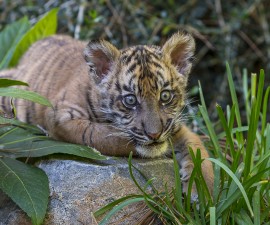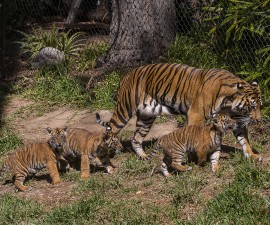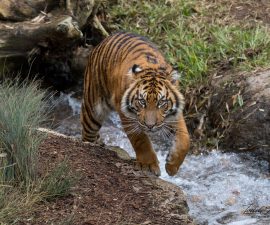While 2018 is already more than one month old, another New Year’s celebration—Lunar New Year, also called the Spring Festival in China—is about to begin. Each lunar new year is named for one of 12 animals (rotating on a 12-year cycle) that are signs of the Shengxiao, or lunar zodiac; and February 16, 2018 marks the beginning of the Year of the Dog. While you won’t see rats, rabbits, roosters, or dragons (unless you count Komodo dragons) on exhibit at the San Diego Zoo or Safari Park, you can see dogs, and many other animals of the Shengxiao. Character traits attributed to people born under each zodiac sign are based on ancient astrologists’ concepts of key behavioral traits of that animal. But do these animals really possess those characteristics? Come see them, and decide for yourself.
Dog (2018, 2006, 1994, 1982, 1970, 1958, 1946)—People born in these years are said to be friendly, honest, kind, loyal, faithful, and smart. Most would agree that those are also characteristics of the domestic dogs that serve as animal ambassadors and companions for cheetahs at the Zoo’s Animals in Action experience and at the Safari Park’s Cheetah Run; as well as New Guinea singing dog animal ambassadors that occasionally make an appearance at the Zoo. Other members of the Canidae family include painted dogs, foxes, maned wolves, and wolves at the Zoo; and foxes and dholes at the Safari Park—all of which are smart, but these wild animals do not have the same desire to please people that domesticated dogs have developed over hundreds of years of living with humans.
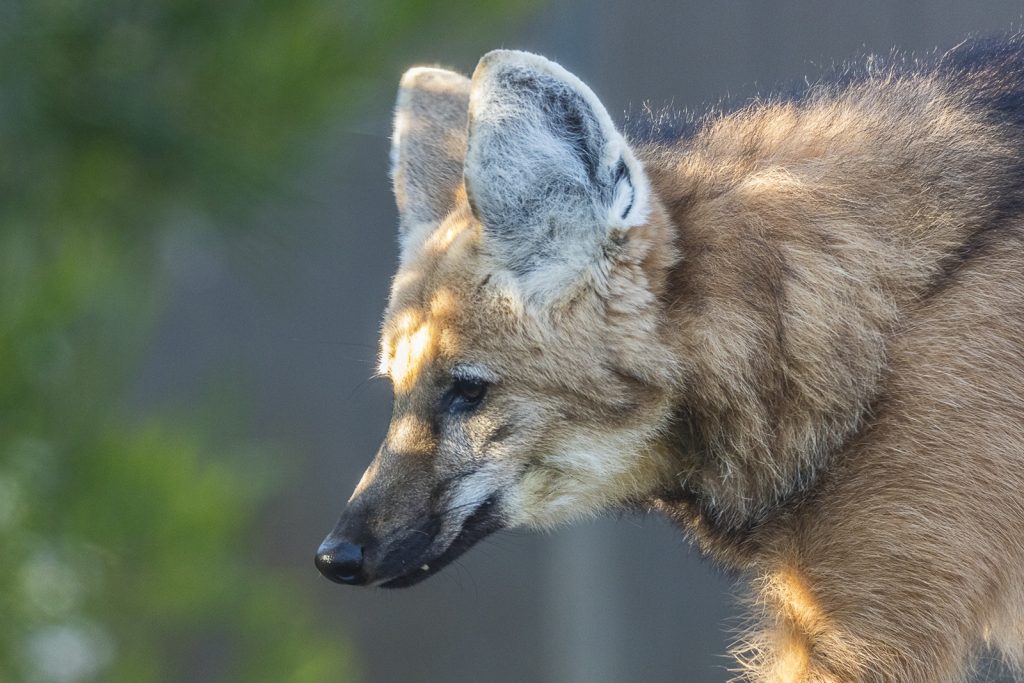
Maned wolf
Monkey (2016, 2004, 1992, 1980, 1968, 1956)—Were you born in the Year of the Monkey? If so, you are said to be adventurous, ambitious, intelligent, and witty. All of these traits fit monkeys to a T, as they are curious, highly social, and communicative animals. Monkeys travel together in large groups, called troops, that can number up to a few thousand individuals, depending on the species; and monkeys form smaller groups within their troops, including bachelor groups and one-male units (OMUs) that include an adult male leader, several females, and their offspring. Good communication is important in these complex social orders, and monkeys are masters at using a wide variety of vocalizations, facial expressions and body movements—even the way they groom each other—to express themselves and get along. You can see more than 25 species of monkeys at the Zoo, including geladas and vervet monkeys in Africa Rocks; mandrills, mangabeys, guenons, colobus, and swamp monkeys in Lost Forest; langurs and macaques in Asian Passage; and spider monkeys in Discovery Passage. The Safari Park has kikuyu colobus and Geoffroy’s marmosets.
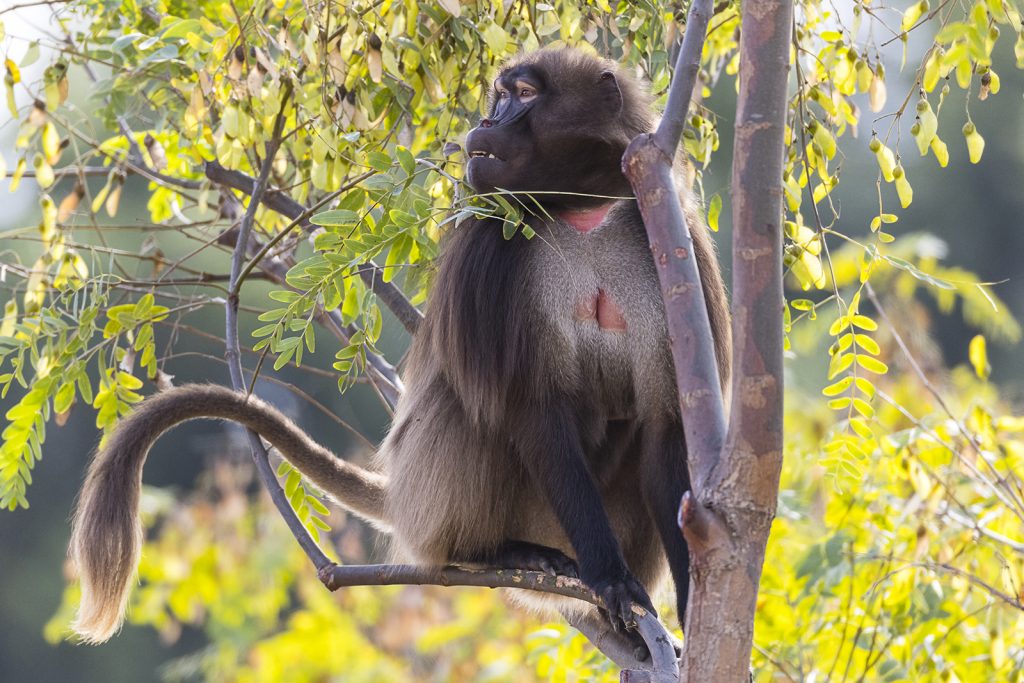
Gelada monkey
Goat (2015, 2003, 1991, 1979, 1967, 1955)—If you were born in the Year of the Goat, Shengxiao astrologers say you’re friendly, gentle, shy, stable, and sympathetic. Domesticated goats you can meet at the Children’s Zoo’s Petting Paddock and the Safari Park’s Petting Kraal are certainly friendly, gentle, and sometimes shy. Wild goat species, such as Nubian ibex at the Zoo’s Africa Rocks and at the Safari Park, aren’t so easy to label. Male Nubian ibex aren’t “gentle” when they’re competing for a female, head butting and sparring with curved horns that can be up to four feet long. However, these wild goats are definitely “stable,” as they can surefootedly climb steep cliffs and jump up to six feet, landing securely on their segmented, concave hooves.
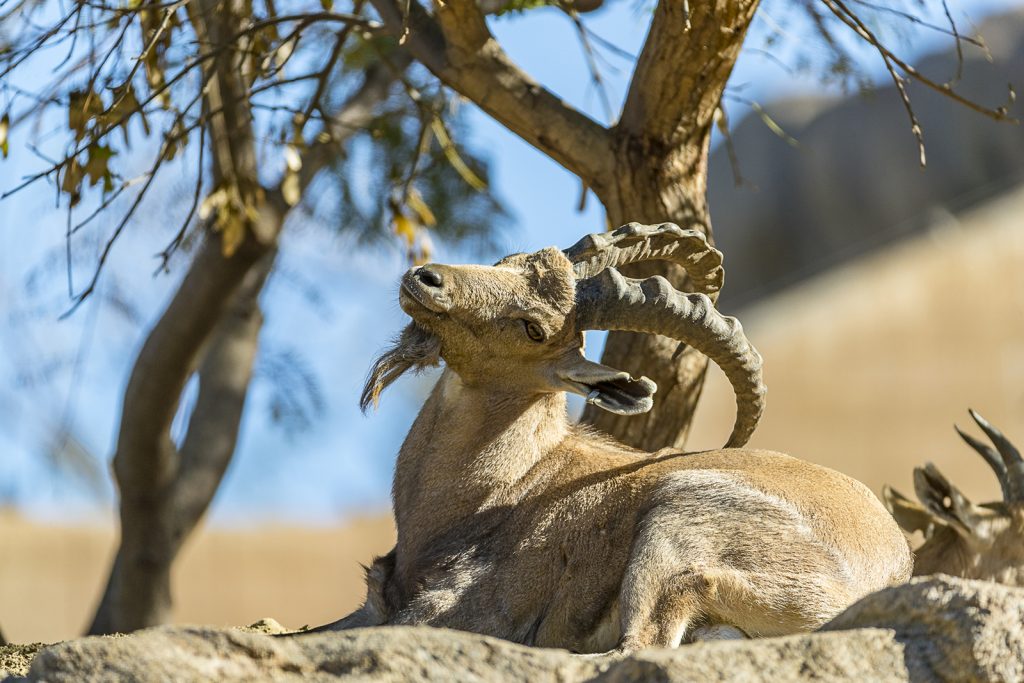
Nubian ibex
Horse (2014, 2002, 1990, 1978, 1966, 1954)—People born in the Year of the Horse are described as active, energetic, kind, and straightforward. While all of those traits sound good, “active” and “energetic” are the two that actually fit a wild horse like the Przewalski’s horses at the Safari Park. Przewalski’s horses travel constantly through their large home ranges—covering anywhere from 1 to 12 square miles in a day—visiting favorite watering holes, grazing spots, and places to rest during hot weather. They live in either bachelor groups or harems that include a stallion, several mares and their offspring.
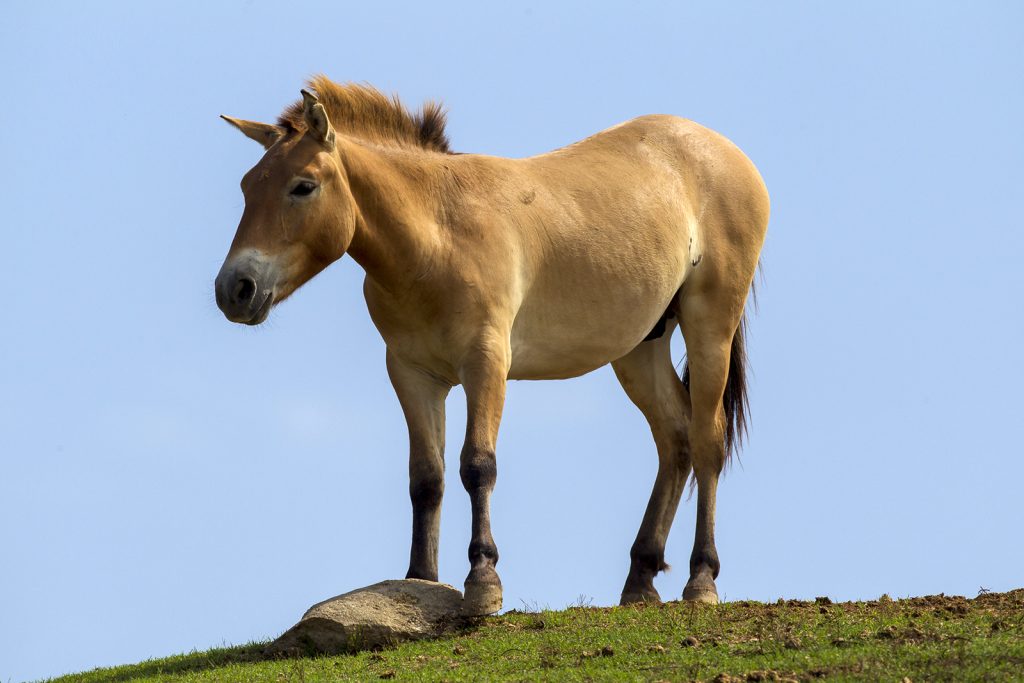
Przewalski’s horse
Snake (2013, 2001, 1989, 1977, 1965, 1953)—Those born in the Year of the Snake are categorized as confident, intelligent, insightful, communicative, courageous, and flexible. Of all those supposed snake traits, flexibility is the one no one would dispute. Snakes can coil themselves around a tree branch, stretch out to their full length to warm their bodies in the sun, curl up to conserve body heat on a cold day, or suddenly spring into an attack to grab prey for dinner. They can move surprisingly fast, slithering along on their bellies or moving in a serpentine motion, using flattened scales called scutes for traction—squeezing and relaxing muscles on each side of their body to move forward. You can see many different snake species at the Zoo’s Reptile House—and on Reptile Walk, at Panda Trek, and in Elephant Odyssey.
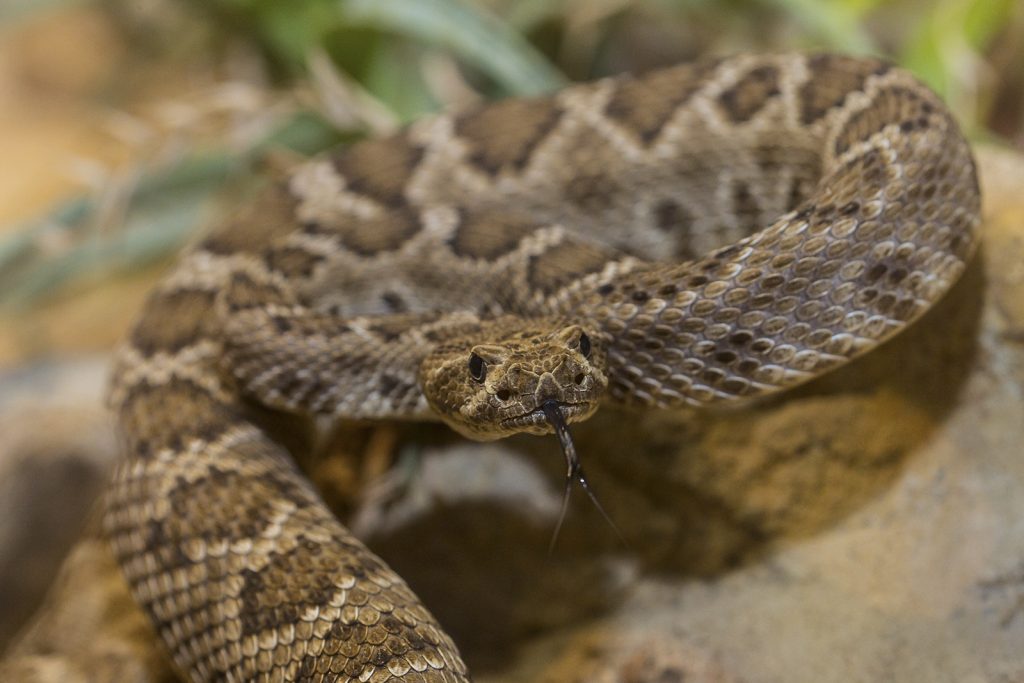
Catalina Island rattlesnake
Tiger (2010, 1998, 1986, 1974, 1962, 1950)—If you’re born in the Year of the Tiger, you are said to be brave, competitive, and self-confident, but a bit unpredictable. Sumatran tigers at the Safari Park’s Tull Family Tiger Trail and Malayan tigers at the Zoo have every reason to be brave, as their hunting prowess is legendary. Tigers are muscular, swift, silent, and patient enough to stalk prey up to 30 minutes before going after it. With their remarkable strength, they are capable of carrying prey weighing twice their body weight up into a tree. They are definitely self-confident and self-reliant, as most tigers are solitary animals except when a female is raising cubs.
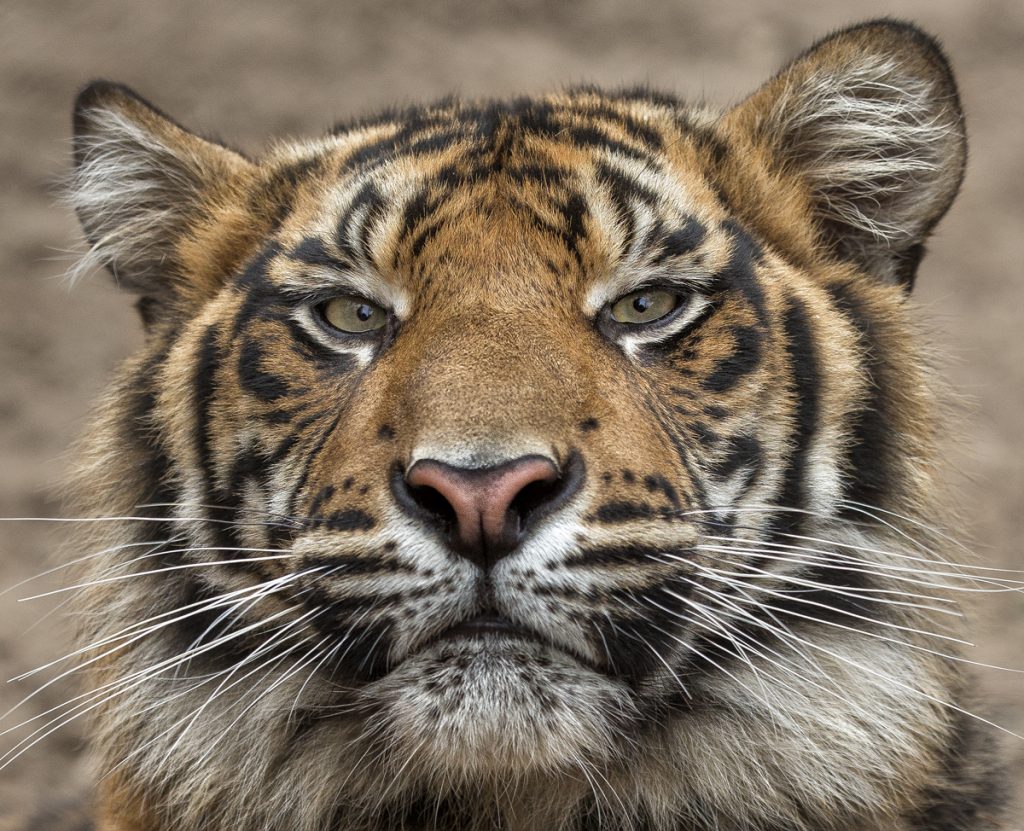
Sumatran tiger
Ox (2009, 1997, 1985, 1973, 1961, 1949)—While you won’t find domestic cattle like oxen at the Safari Park, you will see wild cattle—including Cape buffalo, forest buffalo, gaur, and banteng. People born in the Year of the Ox are said to be hard-working, dedicated, dependable, and honest. If you call wild cattle “hard-working,” it might be due to the fact that they don’t sleep much—maybe a combined total of one hour in a day, since they must always be on watch for predators. Wild cattle are “dedicated” to survival: being constantly observant, traveling in herds (of 50 to 500 for Cape buffalo; and up to 10 for gaur, bentengs, and forest buffalo), and having a highly developed sense of smell helps keep them safe. Whether or not they are “dependable and honest” is anyone’s guess, but you definitely don’t want to make wild cattle mad: Cape buffalo are especially easy to anger, and they will fiercely defend their territory—against lions, leopards, hyenas, and even people—if necessary.
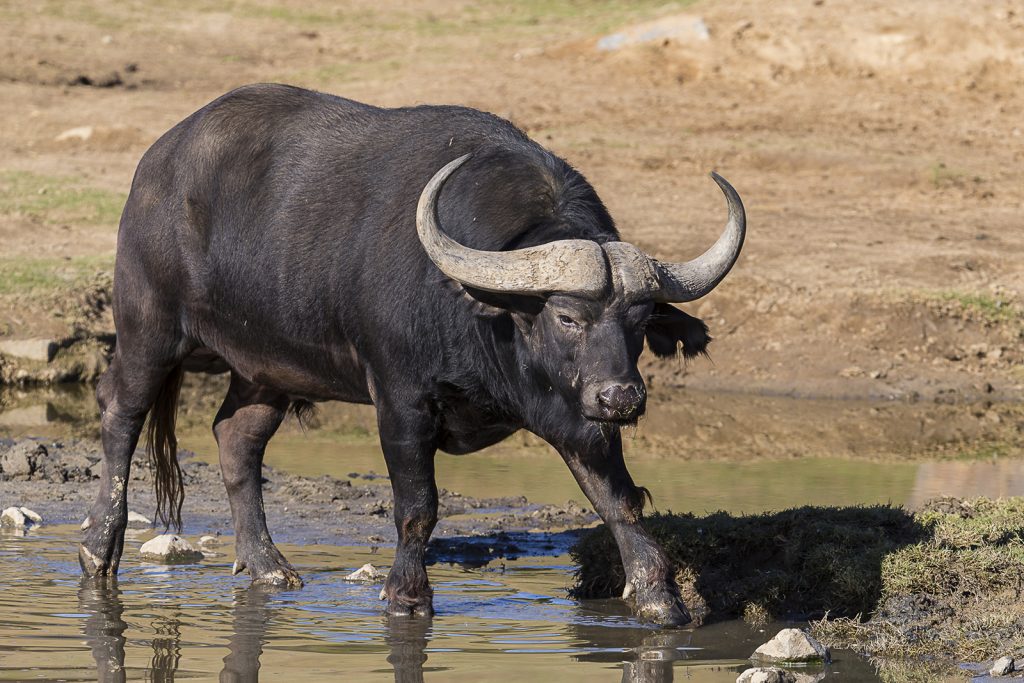
Cape buffalo
Pig (2007, 1995, 1983, 1971, 1959, 1947)—Those born in the Year of the Pig are described as amiable, easygoing, gentle, compassionate, diligent, and generous. Wild swine at the Zoo and Safari Park include Visayan warty pigs, red river hogs, and babirusas—and although they are not always “gentle” (wild pigs can be fiercely defensive, if cornered) and it is not clear whether they are always “compassionate” or “generous,” they are well known for their intelligence. In fact, red river hogs are animal ambassadors at both the Zoo and Safari Park, and one can be seen appearing in the Park’s Frequent Flyers bird show. Wild swine are also known for their strong senses of smell and hearing, their appetite (they are omnivores that spend much of their day foraging for food), and their resourcefulness in finding food, using their snout to detect and root up edible tubers that may be buried up to 10 inches below the ground.
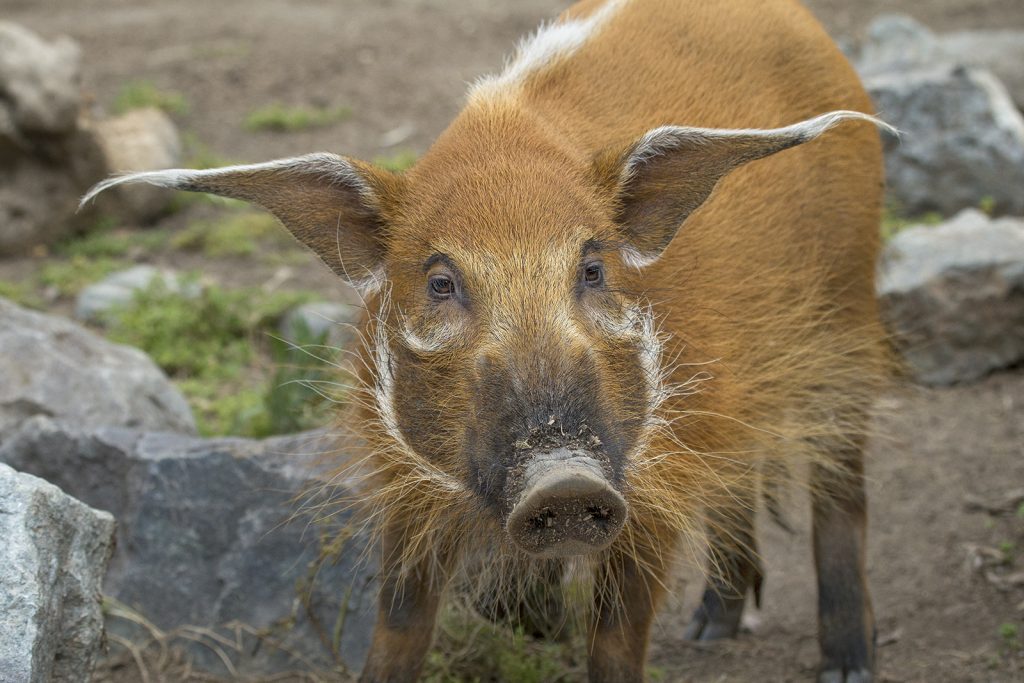
Red river hog
Animals of the Shengxiao that are not on exhibit at the Zoo or Park are: Rooster (2017, 2005, 1993, 1981, 1969, 1957), described as courageous, hard-working, talented, resourceful, and observant; Dragon (2012, 2000, 1988, 1976, 1964, 1952), said to be ambitious, confident, intelligent, hard-working, and persevering; Rabbit (2011, 1999, 1987, 1975, 1963, 1951), called quick, alert, skillful, kind, patient, quiet, gentle, and elegant; and Rat (2008, 1996, 1984, 1972, 1960, 1948), described as quick-witted, resourceful, and versatile. But no matter what “sign” you are, you’ll find much more to discover about your favorite animals at the Zoo and Safari Park.
Eston Ellis is a writer and copy editor for San Diego Zoo Global. Read his previous blog, Armored Animals.

